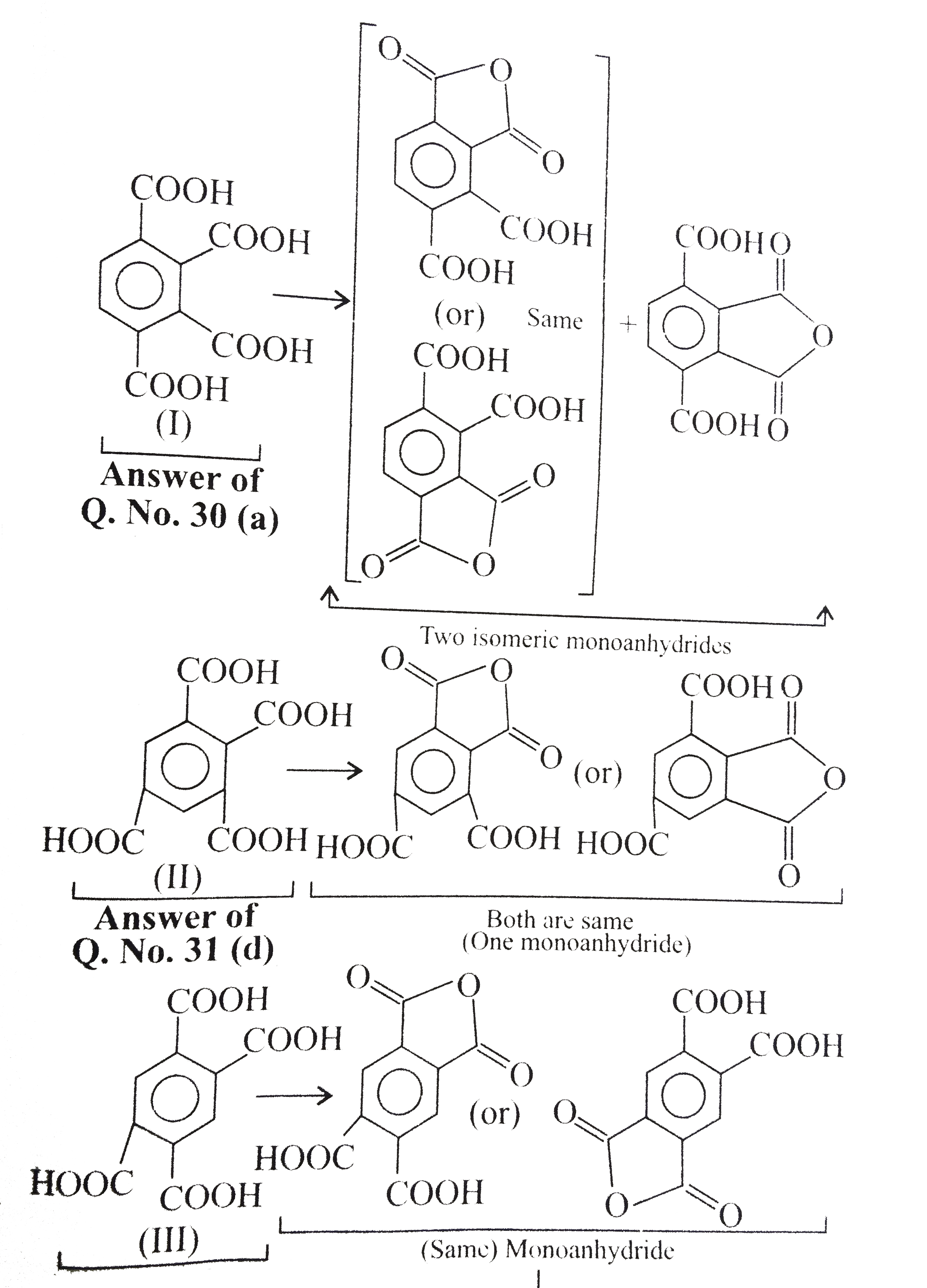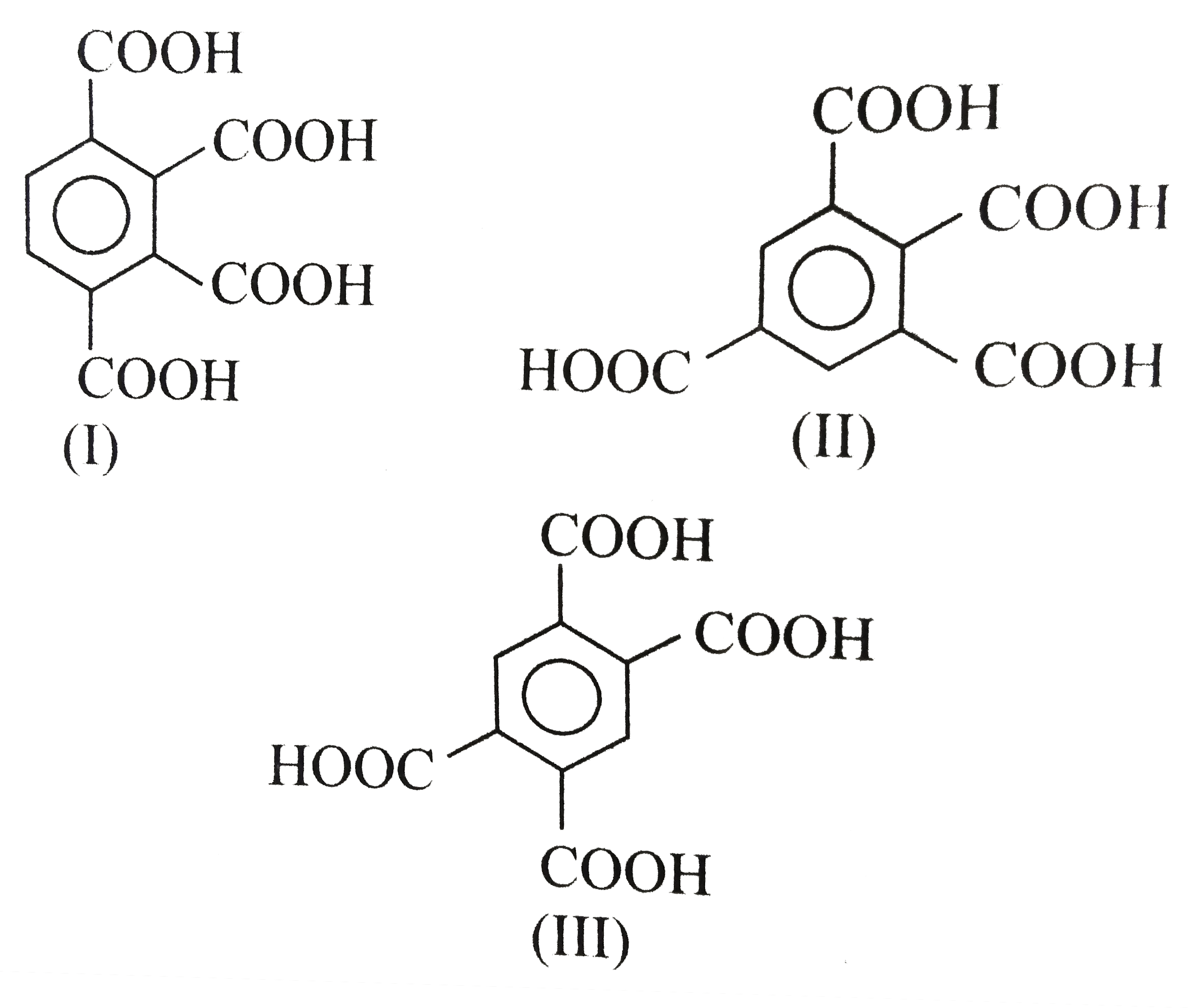Three isomeric tetracarboxylic acids (I),(II), and (III) are given.

They can be distinguised by anhydride formation by treating with one equivalent and two equivalents of SOCl2.
Which tetracarboxylic acid on reaction with second equivalent of SOCl2 to the monoanhydride of (I),(II), and (III) gives a dianhydride ?
A
(I)
B
(II)
C
(III)
D
Both (II) and (III)
Video Solution
Text Solution
The correct Answer is:C
( c)  .
.
|
Topper's Solved these Questions
- CARBOXYLIC ACIDS AND THEIR DERIVATIVESBook:CENGAGE CHEMISTRYChapter:CARBOXYLIC ACIDS AND THEIR DERIVATIVESExercise:Exercises (Multiple Correct)
Explore 35 Videos
- CARBOXYLIC ACIDS AND THEIR DERIVATIVESBook:CENGAGE CHEMISTRYChapter:CARBOXYLIC ACIDS AND THEIR DERIVATIVESExercise:Exercises (Singlecorrect)
Explore 64 Videos
- CARBOXYLIC ACIDS AND THEIR DERIVATIVESBook:CENGAGE CHEMISTRYChapter:CARBOXYLIC ACIDS AND THEIR DERIVATIVESExercise:Exercises (Subjective)
Explore 19 Videos
- BIOMOLECULES, POLYMERS AND CHEMISTRY IN EVERYDAY LIFEBook:CENGAGE CHEMISTRYChapter:BIOMOLECULES, POLYMERS AND CHEMISTRY IN EVERYDAY LIFEExercise:QUESTION BANK
Explore 8 Videos
- CHEMICAL KINETICSBook:CENGAGE CHEMISTRYChapter:CHEMICAL KINETICSExercise:Archives Subjective
Explore 23 Videos
Similar Questions
Knowledge Check
Three isomeric tetracarboxylic acids (I),(II), and (III) are given.

They can be distinguised by anhydride formation by treating with one equivalent and two equivalents of SOCl2.
Which tetracarboxylic acid on reaction with one equivalent of SOCl2 gives two isomeric monoanhydrides ?A(I)B(II)C(III)DAllThree isomeric tetracarboxylic acids (I),(II), and (III) are given.

They can be distinguised by anhydride formation by treating with one equivalent and two equivalents of SOCl2.
Which tetracarboxylic acid on reaction with one equivalent of SOCl2 gives only one monoaanhydride ?A(I)B(II)C(III)DBoth (II) and (III)There are three isomeric tetracarboxylic acid.

Which of these form two isomeric monoanhydrides ?Aonly PBonly P and QConly QDP, Q and R
Write four fraction equivalent to each of the following.
(i) 34
(ii) 57
(iii) 811
View SolutionFind four rational numbers equivalent to each of the rational numbers :
(i)34
(ii)5−7
(iii)(−83)
View SolutionConsider the following reaction :
 ,
,
 .
.
Which of the above three acids, I,II, and III forms anhydribe on heating ?
View SolutionWhat is the equivalent mass of IO−4 when it is converted into I2 in acid medium ?
View SolutionCyclohexanol (I), acetic acid (II), 2,4,6-trinitrophenola(III) and phenol(IV) are given. In these the order of decreasing acidic character will be.
View Solution

